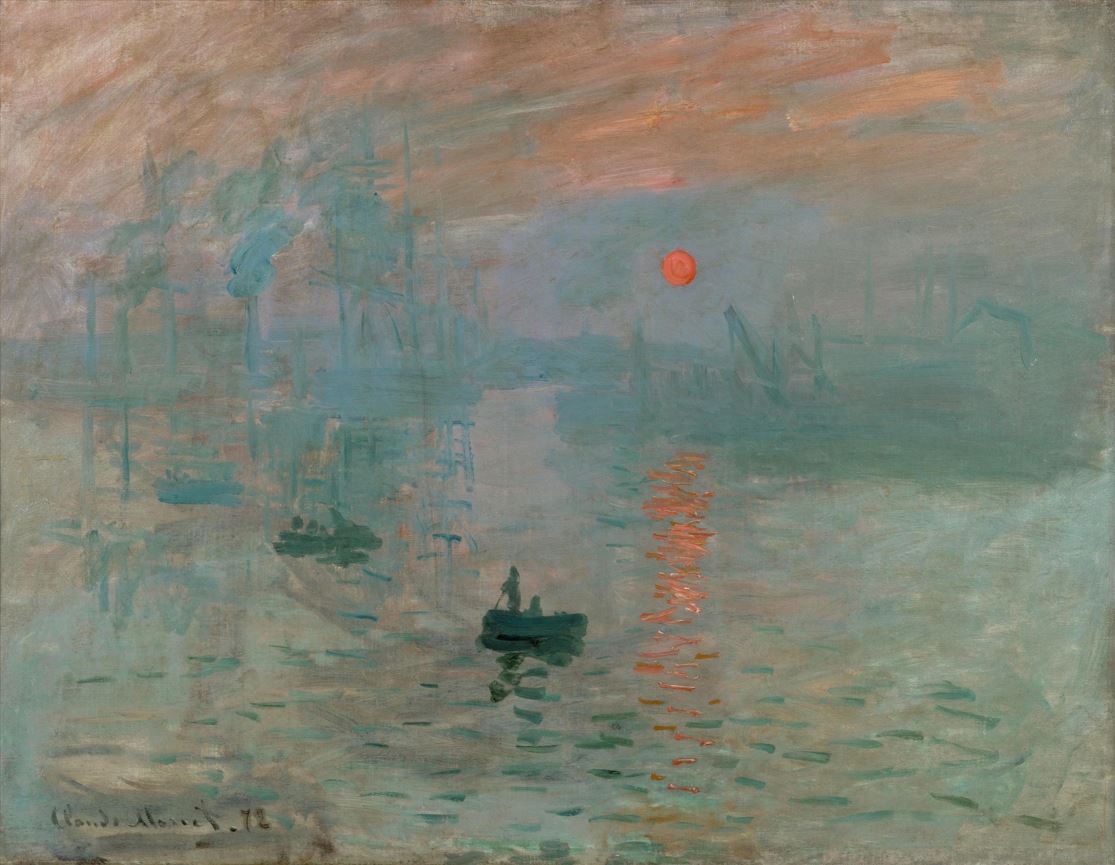Impressionism is a major movement in the art world that started in the late 19th century. Usually expressing an objective view of light and color, it is still one of the most loved styles in modern society. Art in 19th century Paris was all strictly evaluated by an organization called the Academy of Fine Arts. To be a part of their main art exhibition, artists had to wait for the approval of the Salon Jury, who usually only liked realistically drawn art, that dealt with historical or mythological themes. As a backlash against this tradition, artists who yearned for independence from the Salon formed the Anonymous Society of Painters, Sculptors, and Printmakers, holding their own exhibitions and drawing whatever they wanted. A majority of artists joining this movement were Impressionists, since their artwork was considered lousy and strange by the Salon Jury. With the release of photography technology, the value of paintings reproducing reality decreased, which made people wonder about the value of other styles of painting. Also, the invention of vivid synthetic pigments and tube paints made painting outdoors possible, allowing Impressionists to depict landscapes and contemporary life under the sunlight. Now let’s dive into the eyes of Impressionism and find out what artists were aiming to show through their paintings.
Claude Monet (1840~1926)
The word Impressionism was in fact, first used as an insult by an art critic to the unusual style of painting. After seeing Port of Le Havre painted by Claude Monet, Louis Leroy, an art critic at the time, insulted the work by calling it a mere unfinished impression. This was because Monet's works had vague outlines, blurred colors, and visible strokes from thickly applied paint, known as the impasto technique. This was a great shock to the art world at the time which pursued realistic accuracy. Monet is famous for his obsession with the changes that occur with lighting. He tried to capture the ever-changing nature of light and is also famous for painting more than 250 water lilies in the garden of Giberini. His paintings of water lilies present the changes in the pond as the hours pass from sunrise in the east to the sunset in the west. It is ironic that the intense colors and rough brushstrokes bring the feeling of movement and presence to the painting, as if we can almost see the waves in the water and feel the movement of the wind.
 |
 |
| < Claude Monet, Water Lilies, 1903> |
 |
| < Claude Monet, Water Lilies, 1914-1917 > |
 |
| < Claude Monet, Water Lilies (4), 1914-1917> |
Edouard Manet (1832~1883)
Edouard Manet who is often called the father of Impressionism transitioned from Realism to Impressionism in his later life. He had a great influence on other impressionist painters by emphasizing the flatness of the canvas and enabling spontaneous portrayals through the Ala Prima technique of applying different colors of paint before they dry. He had the philosophy that the three-dimensional effect in paintings using perspective was only an illusion, and that the truth of the painting was a flat plane with paint on it. His unique view of art caused controversy and criticism from contemporary art critics. A Bar at the Folies-Bergère was especially criticized for how it expressed two perspectives on one canvas: one from the front and the other one from behind, through a reflection in the mirror behind the woman. Even though the mirror is completely horizontal, the back of the woman in the mirror seems to have been observed from the left rather than from the center. This later influenced Paul Cézanne and Pablo Picasso to spark the start of Cubism, which is a style of art that puts different perspectives into one picture. Even though Manet’s experimental style was often considered ‘wrong’, it inspired many people to view the world ‘outside the box.’
 |
| < A Bar at the Folies-Bergère, 1882, Courtauld Gallery> |
Georges Seurat (1859~1891)
Georges Seurat is well known for his attempt at a new approach to impressionism. Traditional impressionists usually employed the Ala Prima technique and this often caused colors to mix and shapes to distort. To evade this issue, Seurat devised Pointillism, by painting small dots to eventually form an image. Colors that were placed closely together affected each other because of the afterimage effect, while complementary colors collided making them appear more vivid to the eyes. His representative work, Sunday Afternoon on Grand Jat Island, is more than two meters long and three meters wide. This painting had taken him nearly three years to complete, not only because of its size but also because it had approximately sixty rough drafts. The characters in this painting were observed at different times and were later newly relocated under Seurat's plan. Consequently, his work seems rather organized and static when compared to other Impressionists. Unlike other Impressionists who wanted to capture a moment in their daily lives, he wanted to express the eternity of peace by capturing several moments on one canvas.
 |
| < A Sunday Afternoon on the Island of La Grande Jatte, 1884-1886, Art Institute of Chicago> |
Choi Ga Yun choia67@hotmail.com
<저작권자 © 홍익대영자신문사, 무단 전재 및 재배포 금지>





